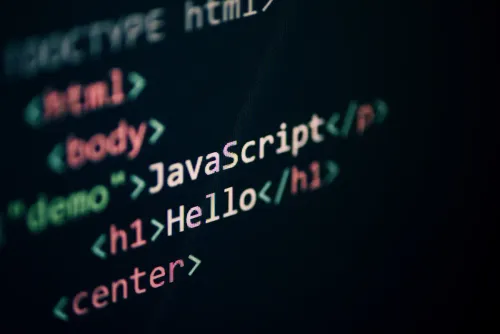Email communication is a cornerstone of modern digital interactions, and ensuring the accuracy of email addresses entered into web forms is essential. HTML email validation using JavaScript is a powerful tool that can significantly enhance the quality of data collected from users. In this comprehensive guide, I, an expert in web development, will take you on a journey through the world of HTML email validation using JavaScript. You'll learn the importance of email validation, various techniques, best practices, and find code examples to seamlessly implement it in your web forms.
The Significance of HTML Email Validation
Before we dive into the technical aspects of HTML email validation using JavaScript, let's understand why it's crucial for web applications and user interactions.
The Importance of HTML Email Validation
Data Accuracy: Accurate email addresses ensure that important communications reach users, avoiding issues caused by typos or invalid entries.
Enhanced User Experience: Effective validation prevents users from encountering errors during the registration or submission process, improving their experience.
Security: Email validation helps prevent malicious activities, such as spam or fraudulent sign-ups, by filtering out invalid email addresses.
Compliance: Valid email addresses are often required to comply with privacy regulations and to establish communication consent.
Now that we've highlighted the importance of HTML email validation, let's explore how to implement it effectively using JavaScript.
HTML Email Validation in JavaScript
JavaScript plays a pivotal role in enhancing the user experience by providing real-time feedback on the validity of email addresses as users interact with web forms.
Basic JavaScript Email Validation
Here's a basic JavaScript function to validate an email address:
function validateEmail(email) {
const regex = /^[^\s@]+@[^\s@]+\.[^\s@]+$/;
return regex.test(email);
}
This function checks if the input matches the typical email format of "[email protected]."
Real-Time JavaScript Email Validation
To provide real-time validation, you can use event listeners to trigger the validation function as users type. Here's an example using JavaScript and HTML:
<input type="email" id="email" placeholder="Enter your email">
<p id="email-error" style="color: red;"></p>
<script>
const emailInput = document.getElementById('email');
const emailError = document.getElementById('email-error');
emailInput.addEventListener('input', function () {
if (validateEmail(emailInput.value)) {
emailError.textContent = '';
} else {
emailError.textContent = 'Please enter a valid email address';
}
});
function validateEmail(email) {
const regex = /^[^\s@]+@[^\s@]+\.[^\s@]+$/;
return regex.test(email);
}
</script>
This code adds a real-time validation message that appears as the user types, offering immediate feedback.
Best Practices for HTML Email Validation
To ensure robust HTML email validation in your web forms, follow these best practices:
Use Both Front-End and Back-End Validation: Implement JavaScript for immediate user feedback and PHP or server-side validation for security.
Regular Expressions: Utilize regular expressions to define email format patterns for validation.
Avoid Overly Strict Validation: Striking a balance between strictness and usability is essential. Don't overly restrict valid email addresses.
Escape Output: If displaying email addresses on your website, use escaping functions to prevent cross-site scripting (XSS) attacks.
Handle Errors Gracefully: Provide clear error messages to users when their input is invalid, guiding them on how to correct it.
Test Extensively: Test your validation thoroughly with different email addresses, including edge cases, to ensure accuracy.
Frequently Asked Questions (FAQs)
Let's address some common questions related to HTML email validation using JavaScript.
Q1: Is JavaScript email validation sufficient on its own?
A1: While JavaScript provides real-time feedback to users, it should be complemented with server-side validation for security.
Q2: What are the most common errors in email validation?
A2: Common errors include missing "@" or domain parts, invalid characters, and incorrect domain configurations.
Q3: Can I use HTML5 input attributes for email validation?
A3: Yes, you can utilize HTML5's built-in type="email" attribute for basic email format validation.
Q4: How can I prevent email injection attacks?
A4: Sanitize user inputs and use prepared statements when interacting with databases to prevent email injection attacks.
Q5: Should I store email addresses in plain text or hash them in the database?
A5: Store email addresses securely by hashing them with a strong cryptographic algorithm before storing in the database.
Conclusion
Mastering HTML email validation in JavaScript is essential for web developers looking to enhance user experience, data accuracy, and security in their web applications. By implementing a comprehensive validation system that combines front-end and back-end techniques, you'll ensure that your web forms capture and validate email addresses effectively.
Remember to follow best practices, test your validation thoroughly, and handle errors gracefully to provide users with a seamless and secure experience. With these skills in your toolkit, you can build web applications that handle email addresses with confidence, ensuring the integrity of your data and the satisfaction of your users.



